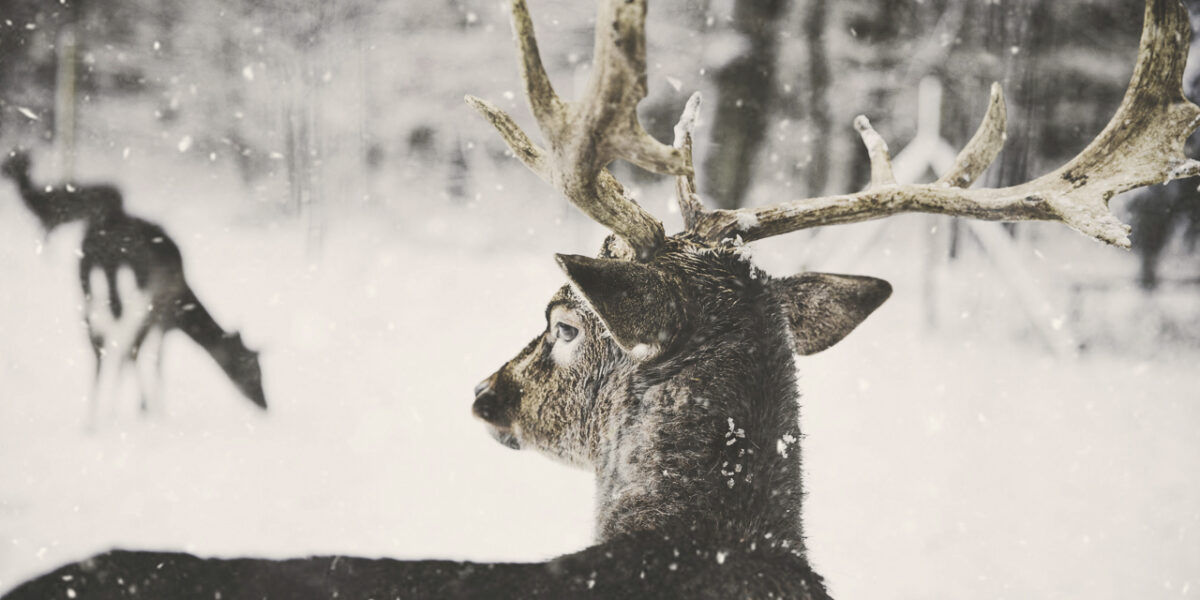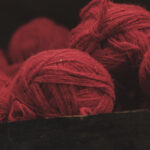In Wonder Tales from Scottish Myth and Legend, Donald Alexander McKenzie hails the Cailleach as the mother of all gods and goddesses in Scotland, and Scottish folk tale collector J.G MacKay refers to her as the most tremendous figure in Gaelic myth today. Although her name can be found throughout Scotland in folklore, customs, ancient monuments and the natural landscape, the Cailleach is one of the lesser-known figures of Celtic mythology and is often overlooked. Her true origins have been lost over time. She is vastly ancient and predates even the Celtic mythology of which she has become a part. One Highland folk tale states that she existed ‘from the long eternity of the world’.
Comparisons and claims to her beginnings are made in places as far-reaching as Spain and India. Some suggest that she was originally a Spanish princess named Beara, others that she is a bastardised version of the great Hindu mother goddess, Kali, brought to Britain by Indian immigrants.
The Cailleach is a crone goddess, usually depicted dressed entirely in grey with a dun-coloured plaid wrapped around her shoulders. Her face is wan and blue, like that of a corpse, and her hair is long and white and speckled with frost. She has a single eye in the centre of her forehead, a trait characteristic of deities who can see beyond this world and into the next.
Many stories describe the Cailleach as wearing an apron or as having a creel strapped to her back, and carrying a wooden staff. In a few sources the staff is replaced with a wand, and in others, a hammer, the crossover suggesting that this could be a shillelagh, a walking stick and club made from the wood of the blackthorn tree. The blackthorn has long been associated with witches, and with the crone aspect of the goddess.
It’s quite plausible that it’s the Cailleach’s distorted image that we imitate as the witch at Halloween – the old woman, dressed in dark robes and carrying a staff, or in more modern times, a broom.
It’s impossible to know if she was always the hag that she is now recognised as or if the Celts endowed her with the crone status in recognition of her great antiquity. The word Cailleach itself, however, is easier to trace – it came to the Gaelic language during the dark ages, based on the Latin root ‘pallium’, meaning ‘a veil’. ‘Cailleach’ as a word has evolved over time and its meaning is now commonly accepted as ‘Old Wife’, but its literal translation is ‘Veiled One’.
The Cailleach is known throughout the British Isles in varying guises. She is Cailleach Bheur, Beira and Carlin in Scotland, Cally Berry and Cailleach Bheara in Ireland, Black Annis in England and Cailleach ny Groamch or Cailleach Groarnagh on the Isle of Man. In addition to these area-specific titles, she assumes many other circumstantial labels: the Blue Hag of Winter, Bone Mother, Woman of Stones, Cailleach Nollaig (the Christmas old wife), Cailleach Mhor Nam Fiadh (the great old woman of the deer), and Cailleach Beinne Breac (old woman of the speckled mountain) amongst others.
Despite the many variations of her name and excepting a few area-specific tweaks to her story, the myths surrounding her consistently focus on her four main aspects: bringer of winter, weather witch, goddess of destruction, and goddess of creation.
Her most prominent characteristic is that of the winter goddess, ushering in the cold and dark winter months at Samhain, the Celtic festival from which our Halloween celebrations originate, and maintaining the cold until Imbolc, the Celtic festival of growth and renewal which is now widely marked in America as Groundhog Day.
In the dark hours of Samhain, the Cailleach washes her great plaid in the Corryvreckan, a huge whirlpool located just north of the Isle of Jura. When her plaid emerges from the tumultuous waters clean and shining white, the Cailleach uses it to cover Scotland in a blanket of snow. Throughout winter she walks the land, striking the ground and trees with her staff to crush any signs of growth that appear there. In some sources she is depicted as riding across the land on the back of a grey wolf rather than walking.
In one of the most common myths of the winter of the Cailleach, she imprisons the young and virginal Brid, the personification of spring, inside Ben Nevis on the night of Samhain. One of the Cailleach’s many sons, Angus, King of Summer, learns of Brid’s existence in a dream and consults the king of the Green Isle regarding her whereabouts. The king replies,
“The fair princess whom you saw is Brid, and in the days when you will be King of Summer, she will be your queen. Of this, your mother has full knowledge, and it is her wish to keep you away from Brid so that her own reign may be prolonged.”
Under instruction from the king, Angus seeks out his beloved and frees her from the confines of the mountain on the eve of Imbolc. The Cailleach, knowing the consequences of Brid’s release, immediately gives chase after the couple and a great fight ensues. The battle continues through the night until the Cailleach escapes her son’s potentially fatal blow by turning herself into a standing stone. She remains in that form until the following Samhain when she will once again return to usher in the winter and imprison Brid within Ben Nevis. In this eternal cycle of light and dark, the changing of the seasons and the fertility of the land are made certain.
At the height of winter in Scotland, it was customary for the head of the household to find a piece of oak and carve into it the face of the Cailleach Nollaig or Christmas Old Wife. This log represented cold and death and would be thrown onto the fire on Christmas Eve where it had to burn until reduced to ashes. This symbolically ensured that the cold of winter would give way to spring and that death would bypass the house during the coming year. The custom continued into the early 1900s but has mostly died out since, presumably due to the dwindling numbers of people having fires in their homes.
As the weather witch, the Cailleach is the sharp and biting wind. ‘Bheur’, one of the additions to her name in Scotland, means ‘sharp’. She is the bearer of storms and, of course, the bringer of snow and frost. It is thought that her title of weather witch originated in the Firth of Cromarty area in the west coast of Scotland where people say that when the winter storms rage, the Cailleach is tramping her blankets.
In the story of the battle between the Cailleach and Brid and Angus, she raises many storms to try to influence the outcome of the fight and harnesses the power of the four winds: ‘The Whistle’, which blew high and shrill, the ‘Sharp Billed Wind’, which pierced the land like a sharp-billed bird, ‘The Sweeper’ whose whirling gusts tore branches from the trees, and ‘The Gales of Complaint’, which scattered food and crops.
In the second volume of his Carmina Gadelica, Alexander Carmichael refers to the Cailleach as a period of time:
‘Cailleach’ is the first week of April, and is represented as a wild hag with a venomous temper, hurrying about with a magic wand in her withered hand, switching the grass and keeping down vegetation to the detriment of man and beast. When, however, the grass, upborne by the warm sun, the gentle dew, and the fragrant rain, overcomes the ‘Cailleach,’ she flies into a terrible temper, and, throwing away her wand into the root of a whin bush, she disappears in a whirling cloud of angry passion till the beginning of April comes again.
Whilst it is easy to automatically label the Cailleach purely as a goddess of destruction and death, one should also consider her aspects of transformation and guardianship. Without her necessary culling of new growth in winter, no life would survive the harsh weather through to the following spring. She is said to have been so fearful in appearance that she scared animals into hiding throughout the cold season, guaranteeing their survival, and also protected all of Scotland’s deer by ensuring that enough ground was left untouched by frost for them to graze on. She is the keeper of the seed; the guardian of the essential life force.
Her guardian aspect has been connected to many wild animals, including wolves and boar, but the most widely known is that of the Cailleach Mhor Nam Fiadh, protector of the deer. She assumes this title throughout the Scottish Highlands, particularly around Loch Treig in the Grampian Mountains. In this area, the local hunters were said to have had a relationship of mutual respect with the Cailleach who ensured that there was always a healthy population of deer to provide them with food and pelts. In return she expected the hunters to keep to her instructions regarding which deer to cull and when, controlling the balance between humans and nature. If her instructions were not followed, there were serious consequences.
One story tells of two boys who were sent out by their father to Stob Choire Claurigh to bring home a deer for their evening meal. Without first consulting the Cailleach, the boys killed a stag, tied a rope around its neck and dragged it for many miles back home, only to discover upon their arrival that the stag had disappeared and the rope alone remained. Their irate father explained to them that if you show no respect to the Cailleach, you receive nothing in return.
In direct contrast to her destructive aspect, the Cailleach is also a great creator goddess. Many sources go so far as to credit her with the creation of Scotland itself. She is portrayed as wading through the surrounding waters up and down the length of the country, dropping large boulders from her creel or apron to make the islands and scattering smaller rocks and stones in the process to make great mountains, Beinn na Caillich on the Isle of Skye amongst them. A scarred path down the side of Schiehallion bears her name, Sgriob na Calliach, literally furrow of the Cailleach, and is said to have been made when she lost her footing and slid down the mountain.
One myth tells how, whilst treading through the waters off the west coast of Scotland, a fisherman in his boat sailed underneath the Cailleach and the sail of his boat brushed the inside of her thigh. She got such a fright that she dropped the boulder she was holding, and it became the island we know today as Ailsa Craig.
On a smaller scale, cairns and standing stones throughout Scotland are dedicated to her. There’s a Cailleach stone on Gigha, for example, and many of the Callanais stones on the Isle of Lewis are said to be the outcome of her creative exploits.
Loch Awe on the banks of Ben Cruachan is another of her masterpieces and probably the most widely known thanks to the retelling of the myth of its creation being featured in the tour of Cruachan Power Station inside the mountain itself. As the story goes, there was once a great well on the summit of Ben Cruachan from which the Cailleach drew her water every day. The well was covered by a heavy stone slab, which it was essential to replace by sunset or the water contained inside the well would spill out and flood the world. One particularly tiring evening, the Cailleach removed the stone slab to draw her water and sat down for a rest before the walk home. Exhausted, she fell into a deep sleep on the hillside, and as soon as the sun disappeared under the horizon, water tumbled from the well in vast torrents and streamed down the mountainside. The roar of the water woke the Cailleach and she quickly replaced the slab atop the well. Whilst she replaced the covering in time to stop the world being flooded, the once fertile Vale of Tempe was entirely covered in water – the Loch Awe we know today.
The House of the Cailleach, Taigh na Cailleach, can be found at the head of Glen Lyon, itself situated near another of her namesakes, Glen Cailleach. This remote turfed shieling has been regarded as a shrine to the goddess for hundreds, perhaps thousands, of years, and twice a year a simple and unique ritual is enacted.
At Beltane, the Celtic festival marking the beginning of summer, the stacked stones that seal the entrance of Taigh Na Cailleach are removed, the roof is freshly thatched, and a family of water-worn stones resembling figures – the Cailleach, the Bodach (old man), and the Nighean (daughter) – are brought outside, where they remain throughout the summer months. At Samhain, the beginning of winter, the symbolic stones are placed back inside the House before it’s entrance is blocked up, and it remains this way until the following summer when the cycle begins again.
Note: This post was first published on 20th July 2007 at Mythmaking.






Claire Lambe aka Clár Ní Luain says:
Hello – really interesting tales of the Scottish tales of the Cailleach. I am from Ireland and, of course, we also have many tales of herself – she is associated with the Beara Peninsula in West Cork – an Cailleach Béara – where she is said to have taken the form of a particular craggy rock there overlooking the sea as she waits for her husband, Manannán mac Lir, (mac Lir: son of the God Lir or Lugh), God of the Sea, to return to her. There’s one version of the story where she starts out as the old hag in autumn or Samhain, and grows young to emerge in spring – perhaps she is also Brigit/Brid.
But, re her association with the Hindu Goddess Kali, I question your theory of this coming from immigrants from India or, at least, if you mean immigrants of recent times (or a few hundred years). I do think you’re right, though, that the association came from immigrants from India but I think it’s more likely that those immigrants are us. By which I mean our ancient forebears: those people who, over centuries, migrated from the east to Europe, became known as Celts and were for centuries the dominant force there until, overwhelmed by the Romans, the culture was marginalized to the western-most parts of the continent. The Celts colonized Ireland between 300 and 400 BCE, and, a thousand years later, colonized Western Scotland and established the kingdom of Dál Riada. They brought the language and their Latin name to Scotland (the Latin term for the Irish was first Scoti and later became Hibernica), which is why Irish Gaeilge and Scots Gaelic are so similar – just different dialects really. Gaelic is an Indo-European language and there are many remnants of Sanskrit in it. The Cailleach, in addition to her name being so similar to Kali in pronunciation, bears an uncanny resemblance to Kali in her attributes: a Goddess of destruction and creation, and her physical description that comes down to us through the stories: the bluish skin and the eye in the middle of her forehead. Isn’t it plausible that she, along with other vestiges of the old religion, survived the journey from India to our islands? It’s pretty cool to consider how in this ancient language of ours, we can trace the movements and the origins of our ancestors.
Thanks again for your terrific treatise on this subject.
Claire
February 3, 2021 — 6:30 am
Fee says:
Hi Claire!
Thanks so much for your comment. That’s a really pertinent point, re Kali. I think you’re absolutely right that the import of the Cailleach via Kali is an ancient one. The similarities between the two are too much to be put down to coincidence. I think Kali could very well have travelled from ancient India across the Celtic countries in Europe, via travel and trade, merging with each culture she encountered and evolving along the way, and becoming the Cailleach of Celtic Britain. Maybe she’s the universal mother, worshipped in different forms by all cultures? I do love that prospect. India was settled by immigrants from the African continent – I wonder if there’s an equivalent of the Cailleach there?
I’ve been learning Scots Gaelic since last year (when you turn forty in Scotland you either start Munro bagging or learning Gaelic, and we can’t get outside so Gaelic it is!) and I find the comparison of the Irish and Scots languages, or as you more accurately put it, dialects, fascinating. The whole intertwining of Scottish and Irish culture is a subject in itself and one that I often consider but wouldn’t even know where to start with! 🙂
February 3, 2021 — 9:03 am
Claire Lambe says:
Dear Fee, thank you for the response and apologies for the double post – that happened when I tried to break up my text into paragraphs so if you can delete one, delete the first post.
Good for you to take on the giant job of learning Gaelic – it’s amazing to contemplate that this is one of the oldest languages in Europe and was extant at least 2000 years when Anglo-Saxon was groping its way to become English – “older than time” to quote yourself. Even if you don’t become fluent, you will learn so much about the Celtic world-view from how the language expresses itself. In Ireland, it’s always been part of the school curriculum – at least since independence. Despite that, I am not a fluent speaker for the reason that it was not spoken outside of the classroom in my part of the country, yet it was taught as if it was, which made it confusing a lot of the time. But going back to it years later, there was much more there than I expected, the phonetics of course and sentence structure, but also vocabulary. But, in our islands, the Welsh get top marks for preserving their brand of Celtic (I can’t make head nor tail of Welsh).
But, yes, the Irish/Scottish connection is fascinating – I think there is a lot of mutual admiration among traditional musicians for our combined musical heritage but, outside of that, I think few people are aware of how closely related we are. I remember once, at age 19 or 20, meeting an older Scotsman in London (he was probably only 40, haha) and mistaking his accent for Northern Irish – he responded as though I’d called him a pig. I found this disconcerting as I knew that, historically, we were related and that, in the 18th century, there was a strong Jacobite movement in Ireland and Irish soldiers, including those exiled to France (the Wild Geese) came to fight with Bonny Prince Charles and the Highlanders at the Battle of Culloden – there was even a rallying song exhorting men in Ireland to volunteer. That song, ‘Óró Sé do Bheatha ‘bhaile’ was rewritten by Padraig Pearce for 1916 but I’ll post a link to the original 18th century words below. In the 1916 version, the one that has survived, Pearce replaced Charles with Grace O”Malley, an Irish sea-faring commander and pirate (and woman!) from the 1500s – old Charlie no longer being an inspirational figure for calling people to arms. Re the Scotsman in London, if I could go back in time, I’d tell him that he should know that it’s no other than his cousin with whom he is speaking. In the meantime, I learned that this was more true to me personally than I knew. I discovered just five years ago that my great grandfather (maybe great great, not certain), a railway worker, emigrated from Scotland to Ireland following the expansion of the railway there in the 1830s.
Here are some links to – first is to the 18th century version of ‘Óró…’ and below that is a sung version I really like by a young group, Seo Linn (Sinead O’Connor also did a lovely rendition of it too): http://chrsouchon.free.fr/orosedo.htm
https://www.youtube.com/watch?v=bzXswoAUi0U
Incidentally, the title and first line of the song is a mistranslation: ”Óró! Sé do bheatha ‘bhaile’ is a shortening (for musical purposes) of ‘is é do bheatha abhaile’ which doesn’t mean ‘welcome home’ as much as ‘your life (birthright) is at home’ – so Charles, who was abroad, is being called to come home and claim his birthright, which makes more sense for something that is a rallying cry. Fáilte abhaile would be welcome home. The first word of the song: ‘Óró!’ is an exclamation for ‘hey!’ or ‘pay attention!’
Also, you might like this book: “Thirty-two Words for Field in Irish, Lost Words of the Irish Landscape” by Manchan Mangan – it’s obviously Irish-centric but I think you can generalize much of it to be true of Scots Gaelic too – it might send you on a quest to discover the meanings of local place names: https://www.amazon.com/Thirty-Two-Words-Field-Irish-Landscape/dp/0717187977
Best regards and good luck with the studies (BTW, what’s “Munro bagging” – sounds like hard work…)
Claire
February 5, 2021 — 8:57 pm
Bran Wildes says:
I like the idea that the Cailleach is another name for the Great Mother; which some, like Mircea Eliade, trace as far back as the Neolithic. It might be that her name is rooted in Latin or PIE; but even this might be a more “modern” development, as she probably had other names long before the arrival of the Celts. While I’ve read about a few connections between the Cailleach and other goddesses, it’s parallels between the Cailleach and Odin that really fascinate me: it was said that Odin was even banned from Asgard for a time, due to his exhibiting womanly behavior. Considering the nature of takeover myths among the Norse, I think this could lead to some interesting possibilities!
I enjoyed reading your article and comments, thank you for taking the time to write it!
July 21, 2022 — 11:59 am
Samantha says:
This was a awesome read thank you
October 23, 2023 — 4:16 am